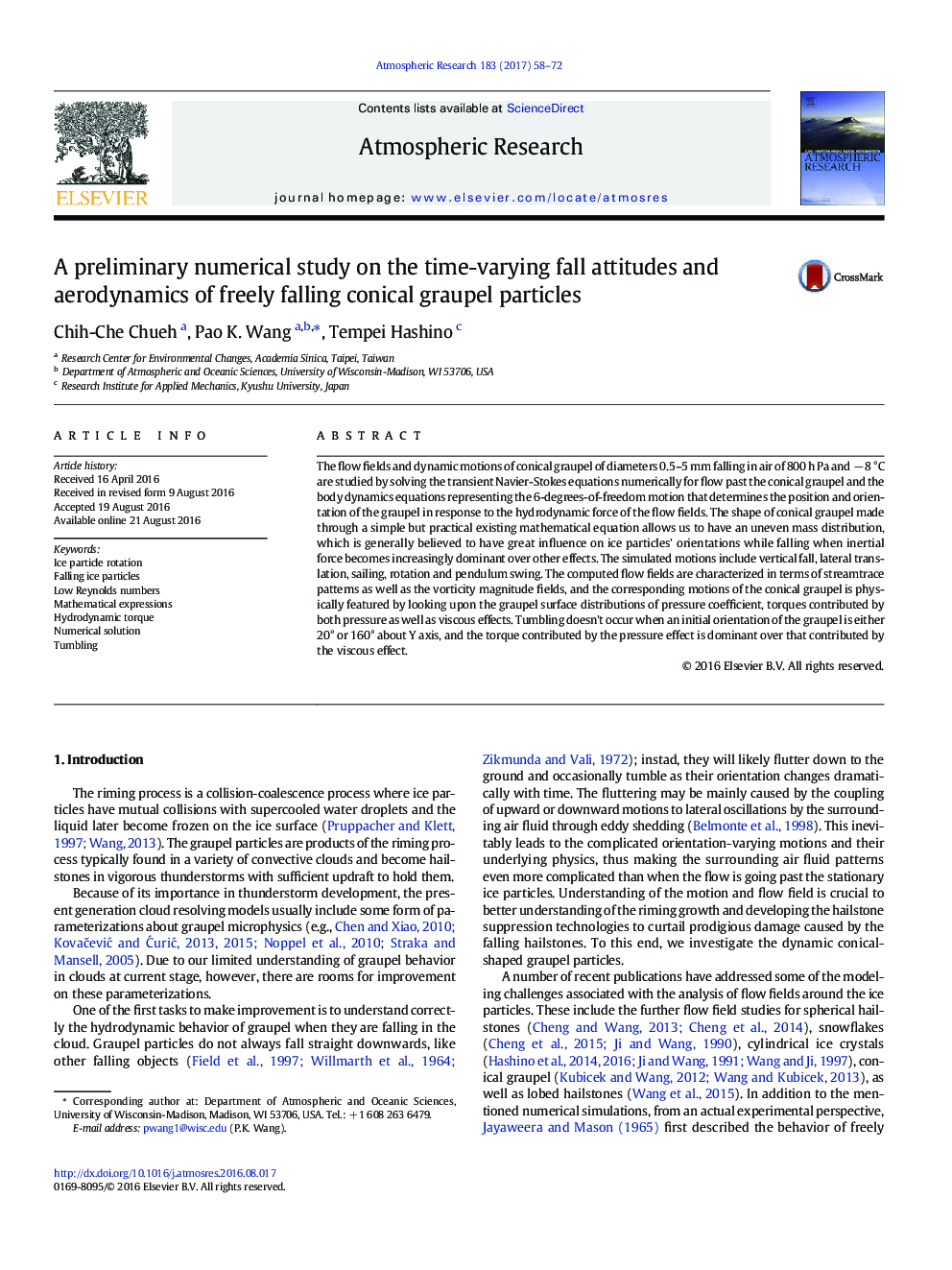| Article ID | Journal | Published Year | Pages | File Type |
|---|---|---|---|---|
| 4449547 | Atmospheric Research | 2017 | 15 Pages |
•We performed a numerical study of the flow fields of freely falling conical graupel particles.•The results compare favorably with experimentally observed fall attitudes of similar particles in a vertical wind tunnel.•We believe this is the first time such numerical flow fields are ever investigated and presented.
The flow fields and dynamic motions of conical graupel of diameters 0.5–5 mm falling in air of 800 h Pa and − 8 °C are studied by solving the transient Navier-Stokes equations numerically for flow past the conical graupel and the body dynamics equations representing the 6-degrees-of-freedom motion that determines the position and orientation of the graupel in response to the hydrodynamic force of the flow fields. The shape of conical graupel made through a simple but practical existing mathematical equation allows us to have an uneven mass distribution, which is generally believed to have great influence on ice particles' orientations while falling when inertial force becomes increasingly dominant over other effects. The simulated motions include vertical fall, lateral translation, sailing, rotation and pendulum swing. The computed flow fields are characterized in terms of streamtrace patterns as well as the vorticity magnitude fields, and the corresponding motions of the conical graupel is physically featured by looking upon the graupel surface distributions of pressure coefficient, torques contributed by both pressure as well as viscous effects. Tumbling doesn't occur when an initial orientation of the graupel is either 20° or 160° about Y axis, and the torque contributed by the pressure effect is dominant over that contributed by the viscous effect.
